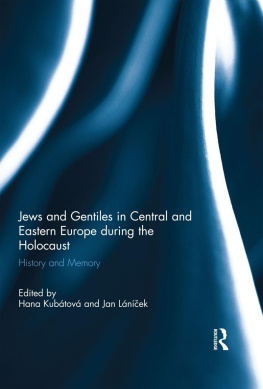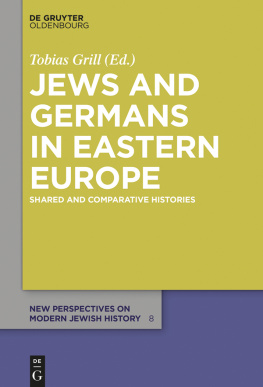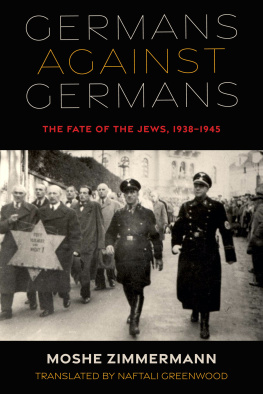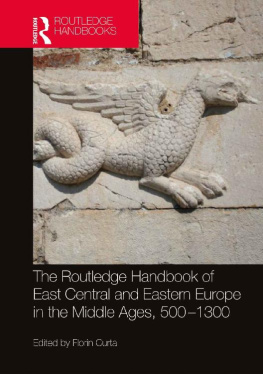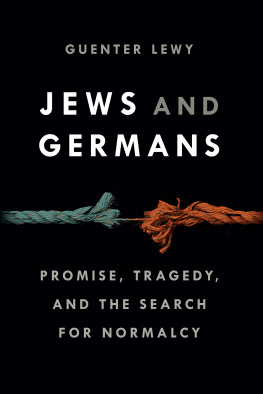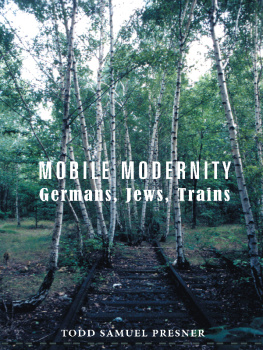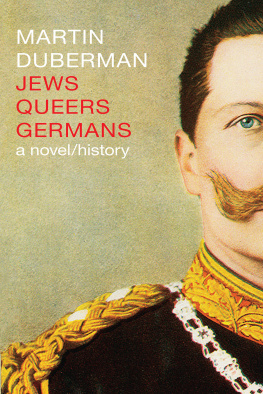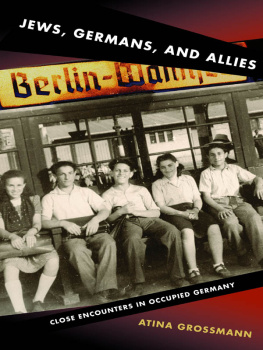ISBN 978-3-11-048937-8
e-ISBN (PDF) 978-3-11-049248-4
e-ISBN (EPUB) 978-3-11-048977-4
This work is licensed under the Creative Commons Attribution-NonCommercial NoDerivatives 4.0 License. For details go to http://creativecommons.org/licenses/by-nc-nd/4.0/.
Library of Congress Cataloging-in-Publication Data
Names: Grill, Tobias.
Title: Jews and Germans in Eastern Europe : shared and comparative histories / edited by/herausgegeben von Tobias Grill.
Description: [Berlin] : De Gruyter, [2018] | Series: New perspectives on modern Jewish history ; Band/Volume 8 | Includes bibliographical references and index.
Identifiers: LCCN 2018019752 (print) | LCCN 2018019939 (ebook) | ISBN 9783110492484 (electronic Portable Document Format (pdf)) | ISBN 9783110489378 (hardback) | ISBN 9783110489774 (e-book epub) | ISBN 9783110492484 (e-book pdf)
Subjects: LCSH: Jews--Europe, Eastern--History. | Germans--Europe,
Eastern--History. | Yiddish language--Europe, Eastern--History. | Europe, Eastern--Ethnic relations. | BISAC: HISTORY / Jewish. | HISTORY / Europe / Eastern.
Classification: LCC DS135.E82 (ebook) | LCC DS135.E82 J495 2018 (print) | DDC 947/.000431--dc23
LC record available at https://lccn.loc.gov/2018019752
Bibliographic information published by the Deutsche Nationalbibliothek
The Deutsche Nationalbibliothek lists this publication in the Deutsche Nationalbibliografie;
detailed bibliographic data are available in the Internet at http://dnb.dnb.de.
2018 Walter de Gruyter GmbH, Berlin/Boston
The book is published with open access at www.degruyter.com.
www.degruyter.com
Preface
In the last 25 years historiography has shifted its focus increasingly away from long-standing methodological nationalism and toward more transnational approaches and perspectives. These take an interest in relational aspects of history, moving beyond a hitherto prevalent concern for the history of the (European) nation state. However different such transnational approaches may:
[] all share the conviction that historical and social processes cannot be apprehended and understood exclusively within customary, delineated spaces or containers, might they be states, nations, empires or regions. Consequently, all of these tools or perspectives stress the importance of the interaction and circulation of ideas, peoples, institutions or technologies across state or national boundaries and thus the entanglement and mutual influence of states, societies or cultures.
Thus, transnational perspectives focus on the multi-directionality of cultural relationships and reflect the rejection of the previously prevailing method of historical comparison which investigates similarities and differences, convergences and divergences between independent units. as Jrgen Kocka and Heinz-Gerhard Haupt have stressed.
One such transnational approach in historiography is the concept of shared or entangled history , which is closely related to the emergence of the New Imperial History.
One of these destructed and largely forgotten transnational, transcultural, or entangled relations is the history of Jews and Germans in Eastern Europe. For many centuries, both groups
Other scholars also have observed the structural and functional similarities of Jews and Germans in the fabric of East European societies. Thus, by referring to the Russian Empire of the 19 th century, Yuri Slezkine has phrased this fact in the following way: The German estate manager was the central Russian version of the Pale of Settlements Jewish leaseholder. These structural and functional similarities might have been the main reason that Jews and Germans were perceived by the surrounding population as the essential others. One example will suffice to illustrate this: in the 1870s there was much anger among peasants in the southwestern region of the Tsarist Empire against Jews and Germans, who they regarded as their main oppressors and bloodsuckers. As Sergei Zhuk has demonstrated:
[] local peasants blamed only Jews and Germans. For the Russian and Ukrainian peasants, especially for recent migrants, the alien others Germans and Jews were the obvious cultural opponents. Therefore, these cultural others became the first victims of the ethnic hatred in the southern provinces.
As a consequence, according to Zhuk, the Russian administration was anxious to maintain and protect the Russian national identity of the peasantry of the southern frontier in the struggle with the economic and cultural influence of Germans and Jews.
Apart from structural and functional similarities, Jews and Germans in Eastern Europe also shared cultural commonalities. These centered on the common origin of German and Yiddish, termed by Peter Stenberg as sister language cultures. According to Stenberg, in his 1991 monograph The End of the East European Yiddish and German Worlds in the Mirror of Literature , within Eastern Europe, Yiddish created a Germanic-language base, which was complemented by the more erratic settlements of the German colonialists in much the same geographical sense.
This concept of sister language cultures emphasizes two distinct cultures founded on the common linguistic origin of German and Yiddish vernaculars. Nevertheless, at certain times and in particular regions of Eastern Europe, Jews and Germans also formed a more hybridized communication community with a shared communication structure.
Even the rise of modern nationalism did not necessarily prompt German-acculturated Jews in Eastern Europe to dissociate themselves immediately and radically from Germanness. Benno Straucher, founder and leader of the Jewish National
Even though there are a few studies focusing on the relationship between Jews and Germans in Eastern Europe, and Nationalism Studies, among others.
The fact that the question of a shared history of Jews and Germans in Eastern Europe is not a superficial one is shown by the phenomenon that, for a long time, even the beginnings of East European Jewry were directly linked to the larger German Ostsiedlung in the East, which developed around the turn to the 12 th century. Thus, many scholars did and do perceive the establishment of German and Jewish-Ashkenazi settlements in the Polish lands as one common historical process. However, as Shaul Stampfer meticulously shows in his contribution, the immigration of German agricultural migrants did not include Jews. Neither did the timing of Jewish migration coincide with that of non-Jewish migrants from the West, nor were these Jewish migrants from German soil proper.
However, this does not mean that Jews and Germans in Eastern Europe, or, more precisely, in Poland, were not perceived as the most prominent others. As Jrgen Heyde analyzes in his contribution, the stories about Jews and Germans are more elaborate in the Annales of Jan Dugosz written in the second half of the 15 th century than in any other work of Polish medieval historiography. These images of the other were used as a mirror of the own. While Germans serve as a reference to explain what, according to Dugosz, was specifically Polish, Jews are referred to by contrast in order to represent Christianity.



